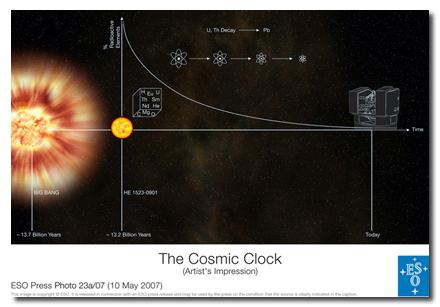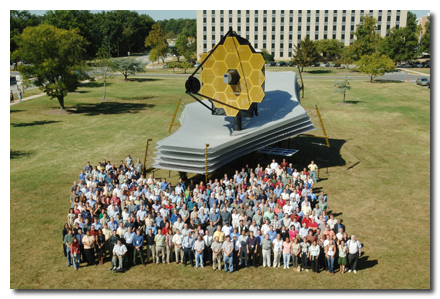A repost of the original at the Syracuse Astronomical Society website.
Meeting/Public Observing This Weekend
Provided the weather holds out, the society meeting this Friday/Saturday (18/19) will be an open-ended observational free-for-all, perhaps a first chance for the year to begin preparing one's observing roster (i.e. getting one's bearings) for the summer skies. We've been lucky with the small number of days already this month to get viewing time in. In my case, I've been able to get three other pairs of eyes (courtesy D. O'Shea, M. Brady and J. McMahon) to gaze through my Tachyon 25 x 100 binoculars to confirm that, in fact, they were worth the price (another story). Having Saturn high overhead in Hydra and Leo during most of the recent late evenings and very early mornings made for exercises in contortion, but the Cassini Division was clearly visible in the few microseconds every few seconds that the atmosphere calmed sufficiently. Jupiter has been very slowly making its way back into the "reasonable hours" of the night sky and, famed as the best non-Moon target for large binoculars and small scopes, makes the next few weeks into mid-June an ideal opportunity to get one's eyepiece box in order!
Society Board Meeting Round-Up
The society held its second board meeting of the year this past Thursday (10th) to discuss plans for the Summer Seminar and a proposed (upcoming) Darling Hill beautification day. The Summer Seminar, dubbed "Meteor Madness" for its overlap with the very beginning of the Perseid Meteor Shower (peaking on August 13), will run Friday night (the usual Public Viewing for the first night) and Saturday (roughly noonish through nighttime observing). The program is still being formalized, with much more to follow (times and speakers) in the June and July newsletters.
A general Darling Hill Clean-Up is being planned for either the first (2nd) or second (9th) Saturday in June, with the plan to give the Observatory proper a thorough cleaning out and to deal with some drainage issues at the Hill entrance (the Observatory entrance is halfway down a reasonably steep incline and the run-off this past year has been considerable). Our neighbor to the south is intending on removing some of the dead trees at the property boundary, which may inch us ever-closer to a view of the southern Horizon (as much as the city lights in Cortland will allow). There will be a follow-up post and society-specific email to follow. If you've time and equipment, we'd love to see you. If you've only time and old sneakers, that will also count for plenty.
"The World's Oldest Star"
That is my monthly poor attempt at astronomy humor. In a world where much of the heated debate is currently centered around energy efficiency and sustainable resources, a shining example of energy for the long-haul was announced this past week with the identification of a star in our own galaxy determined to be 13.2 BILLION years old. Scientists at the European Southern Observatory (ESO), the same facility that reported the discovery of the first extrasolar Earth-like planet just a few weeks earlier, identified the age of the star, named HE_1523-0901, by way of radioactive decay dating of the elements thorium and uranium. This is the same procedure as used for carbon-14 dating, a primary tool of archaeologists for following human history, with the difference being that the half-life of specific isotopes of thorium and uranium are on the order of billions of years (14.2 billion for thorium-232, a paltry 4.5 billion years for uranium-238). That may be long for element lifetimes, but nothing compared to the fundamental atomic particles that make these elements up. Protons, for instance, have a lower-limit lifetime of
1,000,000,000,000,000,000,000,000,0t0u0,000,000,000(10^35) years. For those that don't want to count, the t and u denote the power of 10 at which the half-life of thorium and uranium fall. With a new estimate of the time of the Big Bang at 13.7 billion years, this discovery sheds considerable light on the rapidity of the formation of stars and even galaxies very close to our celestial beginnings.
from www.eso.org
Click for a larger versionWebb Telescope Revealed
The successor to the Hubble telescope was not only announced this past week, but an official mock-up of the final design was made available to the public in Washington D.C. The James Webb Space Telescope, named for the second administrator of NASA and set for an on-or-after June 2013 launch, will have a light-collecting area 6 times that of Hubble, the marvels of which need not be expounded any further here. As the completed telescope will not fit into the Ariane 5 rocket set to lift it into orbit, the actual mirror will be composed of 18 hexagons that will (hopefully) fold out into a honeycomb pattern once the telescope is in place.
The Webb final design is slated to run the assembly agencies $4.5 billion (If you've ever gone from a 10 x 50 pair of binoculars to a 25 x 100 pair (as I recently did), you know that the cost of the optics does not scale linearly with the increasing radius (especially if you started from a cheap pair of 10 x 50's!)), which is made all the more expensive (but no less money-well-spent) by the proposed placement of the scope at L2 (Lagrange Point 2) beyond the orbit of the Moon AND the fact that a mission to correct any problems during unfolding and positioning is considered out of the picture.
from www.jwst.nasa.gov. Click for a larger version. Amassed Astronomy Media Part 3: Project Gutenberg
Yet another corner of the Internet that relatively few seem to know about but that is one of today's great treasure troves of yesterday. The Gutenberg Project, named for Johannes Gutenberg, the father of movable type, is a repository of mostly VERY old and out-of-copyright texts that have been converted to ASCII and HTML format, checked and rechecked by volunteers for accuracy in translation (as necessary) and reproduction, and made available through an easy to use searchable format.Included among currently 17,000 books ranging from ancient Greek and Roman texts to "modern" science fiction books (20th century) are old treatises on astronomy, the direct links to which I provide below. It is, of course, worth searching for any type of book that tickles your fancy. It is always enlightening (amusing) to read scientific texts from past centuries, keeping in mind how future generations may look back at the state of OUR science and technology. Links to six astronomy books are provided below. Note the dates!
www.gutenberg.org/etext/16227
The Uses of Astronomy, An Oration Delivered at Albany on the 28th of July, 1856
Everett, Edward, 1794-1865www.gutenberg.org/etext/8172
History of Astronomy
Forbes, George, 1849-1936www.gutenberg.org/etext/4065
Side-Lights on Astronomy and Kindred Fields of Popular Science
Newcomb, Simon, 1835-1909www.gutenberg.org/etext/15636
The Future of Astronomy
Pickering, Edward Charles, 1846-1919www.gutenberg.org/etext/15620
Recreations in Astronomy With Directions for Practical Experiments and Telescopic Work
Warren, Henry White, 1831-1912www.gutenberg.org/etext/20769
A Field Book of the Stars
Olcott, William TylerSpace is the place,
Damian Allis, Ph.D.
sas@somewhereville.comLinks Used Above (Subject To Web Changes)
www.zhumell.com/specialty/zhumell-binoculars-astronomical.html
en.wikipedia.org/wiki/Saturn
en.wikipedia.org/wiki/Hydra_%28constellation%29
en.wikipedia.org/wiki/Leo_%28constellation%29
en.wikipedia.org/wiki/Cassini_division
en.wikipedia.org/wiki/Jupiter
en.wikipedia.org/wiki/Moon
en.wikipedia.org/wiki/Perseid
stardate.org/nightsky/meteors/
www.cortland.org/
en.wikipedia.org/wiki/Star
www.eso.org/outreach/press-rel/pr-2007/pr-22-07.html
www.eso.org/outreach/press-rel/pr-2007/pr-23-07.html
en.wikipedia.org/wiki/HE_1523-0901
en.wikipedia.org/wiki/Thorium
en.wikipedia.org/wiki/Uranium
en.wikipedia.org/wiki/Carbon_dating
en.wikipedia.org/wiki/Proton
en.wikipedia.org/wiki/Big_Bang
en.wikipedia.org/wiki/Hubble_Space_Telescope
en.wikipedia.org/wiki/Washington_DC
www.jwst.nasa.gov/
en.wikipedia.org/wiki/James_Edwin_Webb
en.wikipedia.org/wiki/Ariane_5
en.wikipedia.org/wiki/James_Webb_Space_Telescope
www.jwst.nasa.gov/orbit.html
map.gsfc.nasa.gov/m_mm/ob_techorbit1.html
en.wikipedia.org/wiki/Joseph_Louis_Lagrange
www.gutenberg.org/
en.wikipedia.org/wiki/Johannes_Gutenberg
en.wikipedia.org/wiki/ASCII
en.wikipedia.org/wiki/HTML
www.gutenberg.org/etext/16227
www.gutenberg.org/etext/8172
www.gutenberg.org/etext/4065
www.gutenberg.org/etext/15636
www.gutenberg.org/etext/15620
www.gutenberg.org/etext/20769

